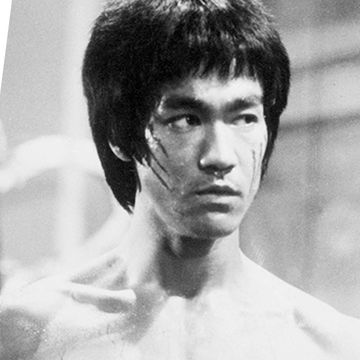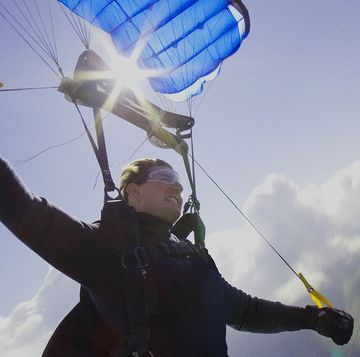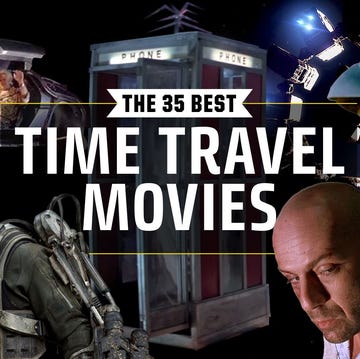In the 50 years since the original crew of the USS Enterprise set out on its mission, Star Trek has inspired generations of scientists, astronauts, civil rights leaders, engineers, and presidents. But don't forget linguists. A quarter-century before the Game of Thrones team created a Dothraki language from scratch, Trek crafted a fully developed tongue for the Klingons. "It's given people a language awareness," says Marc Okrand, the mind behind the Klingon (as well as Vulcan) language. "You learn more about your own (language) by studying another one. Klingon has been a way to hook people into thinking about language."
Starting From Scratch
The Klingons made their first appearance during "Star Trek's" first season, in a 1967 episode titled "Errands of Mercy." They appeared in low-budget (and perhaps racially insensitive) makeup, and they spoke English. Twelve years, in 1979's Star Trek: The Motion Picture, their appearance and speech was rectified.
In theopening scene of the first Trek movie, Klingons, now with their iconic ridged foreheads, shout commands in midst of a space battle. This was the first time Klingonese was spoken on screen (though the TV series mentioned that the Klingons had their own language). These few bits of dialogue, which were subtitled with commands like "Tactical, stand by on torpedoes," were actually created by actor James Doohan who played the Enterprise's chief engineer, Scotty. An experienced voice actor, Doohan aimed to create dialogue that was not of this planet. That he did, though it was not clear whether he devised a grammatical structure to go along with the basics, like the recurring word for torpedos ("cha").
That's when Okrand came along. In the early 1980s, Okrand was hired as the supervisor of captioning at the National Captioning Institute. There, he worked on thefirst television closed captioning systems for the hearing impaired. While captioning movies, sitcoms, and other scripted programing was relatively easy, doing "real-time" programs like news, sports and award shows was a new and major challenge. The 1982 Academy Awards in Los Angeles was to be the first live special to include real-time closed captioning.
During preparations in L.A., Okrand was having lunch with an old friend when serendipity struck. The friend was working on what would become Star Trek II: The Wrath of Khan, and the film just so happened to need a linguist to dub a conversation between Vulcans Spock and Saavik (played by a young Kirstie Alley). Using clues from the little bit of Vulcan spoken in the first film, Okrand got to work. But Vulcan at this time wasn't really a language. "The scene was filmed with the actors speaking English. My job was to make up gobbly-goop that fit the lip movements and then was dubbed in," Okrand says. Two years later, he was asked backed to work on the third Star Trek movie, but this time the task was a bit more complex: to develop the Klingon language.
How to Sound Like an Alien
While Okrand was essentially starting from scratch with Klingonese, he did have a few clues. There were the sounds and commands from the first movie, the character names from the original series, and the script's stage direction that said the Klingon's language had to be guttural. And while the language needed to sound alien, he faced all-too-human constraints. "(Klingon) was going to be spoken by actors very much of this planet," says Okrand, "So, they had human tongues, teeth and throats... so I could only use sounds they could make."
Luckily, Okrand already had considerable experience doing something similar. While studying for his Ph.D. in Linguistics at Berkeley, Okrand did his dissertation on Mutsun, a Native American language from California that had gone extinct in 1930 with the death of its last speaker (it's now in midst of being revived). Using only historical documents, he reconstructed many of the language's features. After studying a language that is no longer spoken, creating a language that did not exist seemed like less of a leap.
All languages have patterns and rules, so the first step was to establish those for Klingon. As Okrand explained in a 2011 interview, he created a "skeleton" of the language by figuring out the syllables from Star Trek: The Motion Picture's limited dialogue. To make the language more alien, he combined sounds from existing languages with sounds that don't appear in those languages. This, Okrand says, "violated tendencies... I put sounds together that are all legitimate (and human) sounds but should not belong in the same language."
He also played with grammar. In the most simplistic terms, there are three basic elements in every sentence in every language: subject, verb, and object. Setting aside certain exceptions and tricks, there are six possible way to order the three elements, and you can find examples of all of them in the world's languages. The most common is subject-verb-object, and that's what English follows. ("He hit the ball" is a simple subject-verb-object sentence) Okrand decided Klingon would follow one of the least common permutations, object-verb-subject (like the South American language Warao). He also decided the language would not have a word for "to be" (which turned out to be a problem when he was asked to translate the Hamlet "to be or not to be" soliloquoy for Star Trek VI). While many languages do not use it all the time (Russian and Turkish are examples), English relies on this phrase, hence making Klingon very "un-English-like."
Put it all together and Klingon is essentially a human language disguised as an alien language. "There are no sounds in Klingon that you can't find in other languages, but the collection of sounds is unique. Likewise for grammar. There's no grammatical feature in Klingon that you can't find in another language... you shouldn't have those particular things all in the same language."
Klingon Culture
This new, sophisticated, fully developed Klingon premiered in 1984's Star Trek III: The Search for Spock. The next year, the Klingon Dictionary was published. Okrand continued to develop the language for subsequent television shows and movies. He helped to create Star Trek's Romulan language, too, but he'll always be proud of the guttural weirdness of Klingon.
"When I was working on it, the (production) crew would come up...and say 'it sounds like..' Arabic, Russian and so forth," says Okrand, "As long as they say kept saying something different, I was happy."
Today, according to the Guinness Book of World Records, Klingon is the most spoken fictional language in the world. There's are Klingon weddings, a Klingon "Christmas Carol, a Klingon translation of the Bible and the Klingon Language Institute, a nonprofit corporation that "exists to facilitate the scholarly exploration of the Klingon language and culture." Even Smithsonian's National Air and Space Museum recently got in the act, releasing their highlights tour in Klingon on their new app.
May the Klingon language live long and prosper. Or, as the Klingons would translate that famous Vulcan phrase into their native tongue, "yItaH 'ej yIcheptaH."
Matt is a history, science, and travel writer who is always searching for the mysterious and hidden. He's written for Smithsonian Magazine, Washingtonian, Atlas Obscura, and Arlington Magazine. He calls Washington D.C. home and probably tells way too many cat jokes.












